After researching shamanism and other forms of global witchcrafts during a residency at the Para Site in Hong Kong, Mihaela Dragan, Romani actress and playwright established an artistic movement called Roma Futurism in 2018. Dragan developed the concept of Roma Futurism with two scopes in mind: One in order to “reclaim the figure of the Roma witch,” as a response to the stigmatization of Romani witchcraft and to redefine the terms on which Romani people relate to their own history of persecution. Romani identity, for Dragan, as it is represented in public discourse began to buckle under the weight of past historical injustice; slavery, genocide, ongoing discrimination painted Romani life in broad homogenizing brushstrokes of victimhood leaving no room for imagining a speculative future in which Roma life doesn’t just survive but actually flourishes. Thus, Dragan sought to create a world that is not simply an erasure of the past, but rather a negotiation with it, tracing a path towards the longed-for-world via instruments of healing and rituals that enact true emancipation for Roma –emancipation forged in the cauldron of the witch and not in the chambers of parliament. In stating that “witchcraft becomes our political response to the social inequalities and the injustices of the world we live in,” Dragan follows a core teaching of Audre Lorde, that the “master’s tools will never dismantle the master’s house.” Hope no longer lies in empty human rights discourses of the State, but rather in the hands of the Techno-Witch who shepherds us into an emancipatory future. Roma Futurism, thus, draws on markedly Romani epistemologies to set forth a vision for a future in which Romani women are free from patriarchy and racial oppression.
Roma Futurism is an intersectional artistic movement concerned with “reevaluating the history of the Roma from a perspective that incorporates the healing of pain and transgenerational suffering genetically transferred to the Roma by their ancestors, victims of slavery and the Holocaust,” according to Dragan. Roma Futurism challenges widespread misrepresentations of Romani women through artistic practices that re-appropriate stereotypes, combining them with symbolic and cultural elements of new technologies to forge futuristic utopias that reimagine and reconfigure social hierarchies of oppression. In doing so, Dragan radically intervenes in governmental, societal and even anthropologic discourses that render Romani as primitive and backwards – discourses used to subjugate colonial subjects and Roma as Europe’s internal other—by reframing “traditional crafts” as technological innovation. Dragan rejects coloniality, white supremacy, the civilizing trajectory of Eurocentrism, and other ideologies that feed oppression not only of Roma but all racialized peoples, in order to lay claim for the historical strength of Roma, oft eclipsed by the over-representation of Romani suffering.
Dragan began her foray into Futurism by enunciating a new geologic era, the era of the Romacen with her 2019 play by the same name. If the Anthropocene is a geological era marking the dominance and ecological impact of the human species on earth, then the Romacen: The Age of The Witch, is an intersectional response to it. Following, post-colonial thinkers like Dipesh Chakrabarty, the “Romacen” de-centers the universality of the “human” that the Anthropocene uses as its default subject which serves to erase systems like capitalism, colonialism and slavery inherent to the environmental impact it seeks to describe.[1] In centering an intersectional, racialized subject like the Romani Witch, Dragan, ruptures the universalizing logic of the Anthropocene; the gesture of enunciating a geologic era functions as a subversive critique of the anthropocentrism which led to the concept of the “Anthropocene.”

Fig. 1 Romacene: The Age of the Witch photo: Volker Vornehm
Alongside decolonial thinkers like Frantz Fanon, Dragan understands decolonization as, to quote Samira Kawash, “something much more radical than the reversal of position and the replacement of rulers; decolonization is the uprooting of the system as whole.”[2] In “epoch-making,” in forging the epoch of The Romacen, Dragan enacts a decolonizing move of “world-shattering,” that not only rejects the status quo, but also the geo-politics coloniality, i.e. the underlying logics of the colonial matrix of power, which continue to buttress systemic racism. In RomaFuturism, Dragan goes beyond critique in forging a new, be it imagined, world of liberation for the Roma. Through a markedly Romani, feminist artist praxis Dragan seeks to redefine how Roma are construed by dominant history as well as trace with more nuance Romani people’s relationship to the past in the context of imaging new futures, which enacts a decolonization of hegemonic narratives about Roma and a reclaiming of Romani-ness, embracing Romani ways of being and ways of knowing, in an anti-anti-essentialist manner.[3]
Indeed, Dragan’s work forces us to contend with how coloniality shapes representations of Roma historically and how those representation continue to haunt the collective imaginary vis-à-vis the Roma. It sheds light on how modernity, coloniality, and (post) Enlightenment thought, has for centuries molded a Figure of the Roma in European collective imaginary in the negative, robbing Roma of their subjectivity. As Catherine E. Walsh states: “The control of labor and subjectivity, the practices and policies of genocide and enslavement, the pillage of life and land, and the denials and destruction of knowledge, humanity, spirituality, and cosmo-existence became the modus operandi of this new model and pattern of power that later traveled the globe.”[4] The new pattern of power to which Walsh refers is the colonial matrix of power (cmp) which Walter Mignolo describes as:
Inevitably, the question of subjectivity and subject formation emerges: the cmp is involved in the creation of particular persons/subjects and institutions, but the cmp also takes on a life of its own, shaping and contorting the subjectivity (the reasoning and emotioning) of the person managing it. Because of coloniality, control of the terms of enunciation (i.e., control of knowledge) is necessary for controlling the domains, and controlling the domains means managing the people whose lives are shaped by the domains.[5]
Coloniality has distorted the lens through which Romani subjectivity could be captured. Instead of portraits honoring our ancestors or archives documenting Roma joy, official archives are full of SS officers humiliating Roma women or exoticizing illustrations of Romani encampments circulating westward on postcards. The visuality of RomaFuturism implicitly rejects those representations and simultaneously creates new images, new symbols, new myths to replace the damage that produced by the disaster that is enslavement and genocide.
As Cristina Sharpe points out archives of the visual representations of Black people, ——which could be extended to include other marginalized bodies, like the Roma— are dominated by ‘photographs of Black people in distress,’ even when they “purport to ‘humanize’ Black people—that is, they purport to make manifest ‘humanity’ that we already know to be present.”[6] Instead of enunciating a kind of minority discourse and visuality that relies on admittance into the category of the human—that continuously asks the white gaze to acknowledge and validate the humanity of the Black or brown subject by reciting suffering, by performing to white audiences the after-effects of Slavery and persecution, RomaFuturism, chooses instead, to nod to the past and turn its gaze towards a present. In doing so, RomaFuturism generates new images—a new visuality, which hails Roma (Althusser) in a very different way than the archives constructed from the dominant gaze do.
One of the core tenets of Dragan’s new work on Roma Futurism is a wrestling with transgenerational trauma and the weight of historical oppression through the praxis of what she calls Roma Healing. For her newest work as part of ongoing artistic practice rooted in the concept of Roma Futurism, Dragan wrote, produced and directed a film called Future is a safe place hidden in my braids (17’57”) which premiered this month in exhibition at the Goethe Institute in Bucharest. As mentioned, in her concept of Roma Futurism, alongside Frantz Fanon, Dragan rejects the prescriptive abjection and victimhood of historical oppression, asking us to imagine a future in which Roma are free of the constrains of oppressive history. At the same time, Dragan simultaneously honors the legacy of our Roma ancestors, while paving a pathway towards the future.
“I am not the slave of the Slavery that dehumanized my ancestors.”
It is with this phrase that Frantz Fanon begins to cadence his infamous book Black Skin, White Masks to a close. In this seminal text Fanon “made it a point to convey the misery of the black man. Physically and affectively.”[7] After penning tens of pages in which he traces the abjection of Black subjects, he concludes with a revolt against the very history he describes:
The body of history does not determine a single one of my actions.
I am my own foundation.
And it is by going beyond the historical, instrumental hypothesis that I will initiate the cycle of my freedom.
The disaster of the man of color lies in the fact that he was enslaved.
The disaster and the inhumanity of the white man lie in the fact that somewhere he has killed man.[8]
Fanon rages against the annals of history in the name of “freedom.” As Darieck Scott puts it, for Fanon, “the resistance to defeat is the resistance to history, for history is defeat.”[9]

Fg. 2, Film still from Future is a safe place hidden in my braids (2021)
Unlike Fanon who wields a sharp knife to cut the sinews that tie him to history, Dragan leaves them intact until they turn to dust, but their residue remains intact as the memory of trauma endures. The dust that the feet carry on the journey towards liberation turns to glitter in the film and the audience understands that through Roma Healing—through the performance of rituals—Roma honor and processes the traumatic history of their ancestors and carries forward the memory. For Fanon liberation is contingent on a rupture with the disaster—of slavery and subjugation; Roma Healing lightens the load but does not leave it behind. Returning to the passage quoted above from Fanon, we can hear the echoes and resonances with RomaFuturism. Slavery was the disaster; genocide was the disaster, and we live in its wake. Yet, as Fanon’s declaration at the end of Black Skin, makes clear, to live in the shadow of persecution is not to live freely. This does not mean the annals of history should simply be ignored, but rather we must make room for imagination, for dreaming, and healing, without this trinity, you have no hope, no place of arrival upon liberation.
As Dragan’s voice explains to the Witch’s granddaughter, when she says, “You are lit by the thousands of flames kept ablaze for you by those who came before you/You are their dream—those buried with those before you in their earthly graves. Your name is Liberation,” Liberation is fueled by the ancestors, their stories, struggles, resistances, and victories.
The Flourishing of Roma life: sites of reproductivity as “speaking back” to bio-political and genocidal politics
Roma Futurism is political art that pushes back against stereotypes that have fed fascist regimes persecution of Roma and witches. As Silvia Federici argues in her book, Caliban and the Witch: Women, the Body and Primitive Accumulation women and witches were victims of capitalism, their womanhood wielded as a weapon against them to justify their oppression. The oppression of Roma has been for centuries rooted in totalizing narratives about Roma, as criminals and vagrants. In reappropriating these stereotypes Dragan not only reclaims Romani-ness, she uses artistic practice as a space of critique of world systems and geopolitics that have oppressed that which deviated from the norm of what Sylvia Wynter calls the Figure of Man—i.e. white Western man.
Dragan’s work serves as an important counter to the appropriation and misuse of Romani culture. A salient example is the subversive distortion of Maria Tanase’s song “Whoever loves and leaves” (Cine iubește și lasă), an artist who appropriated many Romani songs over her career, into an incantation against racism that fosters Roma Healing:
Whoever practices racial hatred
Whoever hates Roma and women
Shall only have misfortune
May God punish him
Dragan’s work is political, it is critical, it is angry and it “talks back” in the way bell hooks imagined, to centuries of persecution driven by white supremacy, buttressed by Eurocentrism.[10] Its vision for the future— the alternative, utopic visions it imagines—are ones that fill me, a Roma woman, with hope. Dragan’s work is speculative but is deeply rooted in recognition of the past. In the third installment of Future is a safe place hidden in the witch’s braid (2021) “Witch’s seed,” the mise-en-scene centers Romani witch Mihaela Minca’s granddaughter, Bianca, a young woman who will carry forth her craft in the wake of persecution just like those before her. Dragan’s text addresses the young woman, a symbol of the next generation and the harbinger of the future Dragan imagines.

Fig. 3, Film still from Future is a safe place hidden in my braids (2021)
Dragan’s protagonist tells the young witch, “When the power of the darkness of your skin defeats him, then you will know that you are not alone.” Darkness, the terms on which white supremacy laid claim to non-white bodies, is reclaimed as power, power that Dragan understand as having been acquired through persecution, “The power that we have gained in all these years of oppression.” Thus, with Darieck Scott, Dragan searches for strength in abjection, for whom “blackness-as-subjugation” is not a deterministic or fatalistic. These thinkers recover darkness and blackness, in an understanding that “there are potential powers in blackness, uses that undermine or act against racist domination.” (Scott 39).
Finally, Dragan recovers the reproductivity of the Roma woman. As Carmen Gheorghe states:
The [Roma woman’s] body thus becomes a transmitter of negatively charged social and cultural messages, almost obsessively so, if we analyze the way in which Roma women are portrayed both historically and discursively. It is the product of social, cultural constructions and regulated by political, hetero-normative and discursive regimes (Gheorghe: 2014). And by associating with the women’s body as a negative term, the control of the reproduction or stopping of the Roma ethnicity is legitimized.[11]
In the film, reproductivity of Roma women, which has gone hand in hand with the hyper sexualization of Romani woman, is recovered by Dragan, as she tells Bianca, the young witch to:
Hide witchcraft in the locks of your braids, and when the wind blows, let it carry the strands of your hair as far as they can go. They will be the seeds that will blossom into the Techno-Witches. We will proliferate through the power of our magic. We will multiply through the means of our technology. Our people will not die. We will be many and we will have a place in this world. The time has come.
The Future Is a Safe Place Hidden in My Braids (17’57”)
With: The witches Mihaela Mincă, Casanndra Buzea, Ana Buzea, Anda Ion and Bianca Buzea
Text: Mihaela Mincă and Mihaela Drăgan
Image: Andreea Câmpeanu and Amalia Drăniceanu
Drone camera: Eugen Paraschiv
Video montage: Andreea Câmpeanu
Sound design: Silly Conductor
Music: Alex Bălă
Lyrics to the song ”Whoever hates race”: Mihaela Drăgan
Performing the song: Nicoleta Ghiță and Mihaela Drăgan
Voiceover: Mihaela Drăgan
Visual effects: cote.ggml
Costumes: ATU Body Couture and Zita Moldovan
[1] “[T]he story of capital, the contingent history of our falling into the Anthropocene, cannot be denied by recourse to the idea of species, for the Anthropocene would not have been possible, even as a theory, without the history of industrialization. How do we hold the two together as we think the history of the world since the Enlightenment? How do we relate to a universal history of life—to universal thought, that is—while retaining what is of obvious value in our postcolonial suspicion of the universal? The crisis of climate change calls for thinking simultaneously on both registers, to mix together the immiscible chronologies of capital and species history. This combination, however, stretches, in quite fundamental ways, the very idea of historical understanding.” (Dipesh Chakrabarty, The Climate of History: Four Theses.” Critical Inquiry 35, no. 2 (Winter 2009): 197-222)
[2] Neil Roberts, “Fanon, Sartre, Violence, and Freedom,” Sartre Studies International 10, no. 2 (2004): 139-160.
[3] Paul Gilroy. The Black Atlantic: Modernity and Double Consciousness (Cambridge, Mass.: Harvard University Press, 1993).
[4] Mignolo, Walter D., and Catherine E. Walsh. 2018. On decoloniality: concepts, analytics, praxis, (Durham: Duke University Press), 16.
[5] Ibid, 145.
[6] Christina Sharpe. In the Wake: On Blackness and Being, (Durham: Duke University Press, 2018), 83.
[7] Frantz Fanon. Black Skin, White Masks. Trans. Charles Lam Markmann (London: Pluto Press, 1967), 64.
[8] Ibid, 180.
[9] Darieck Scott, Extravagant Abjection: Blackness, Power, and Sexuality in the African American Literary Imagination (New York: NYU Press 2010), 39
[10] bell hooks, Talking Back: Thinking Feminist, Thinking Black, (Boston: South End Press, 1989).
[11] Carmen Gheorghe, Problema Românească: o analiză a rasismului românesc (București: Editura Hecate, 2019), 140.
POSTED BY
Ioanida Costache
Ioanida Costache is PhD candidate in ethnomusicology at Stanford University. Her research explores issues of race and ethnicity, performance/construction of identity, cultural memory, trauma, and hist...
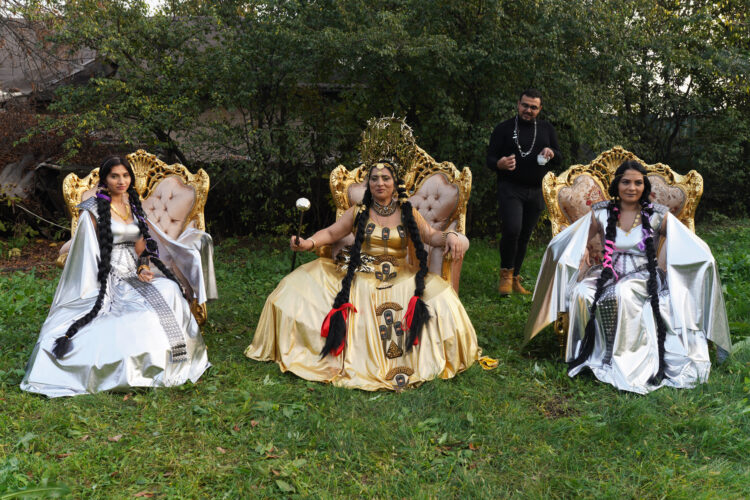






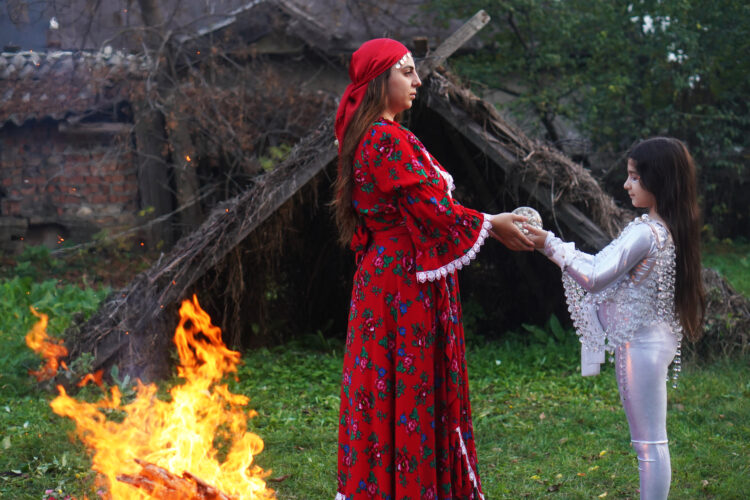


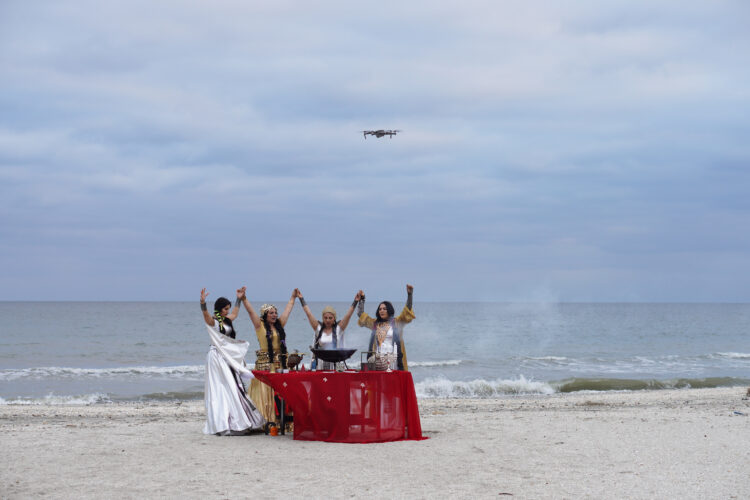

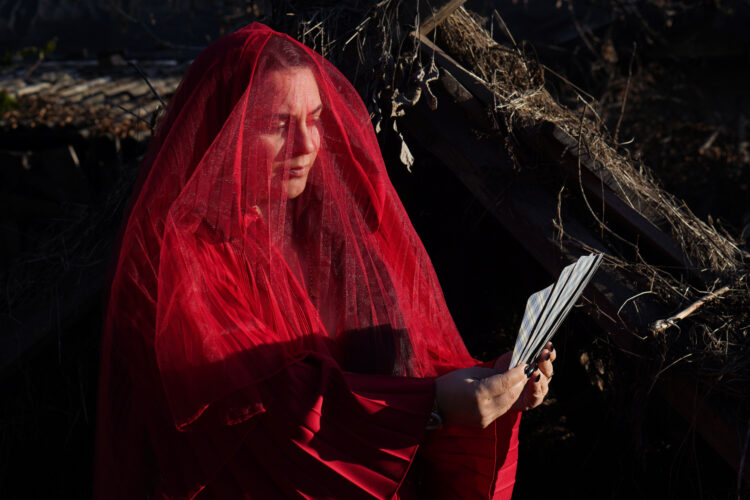




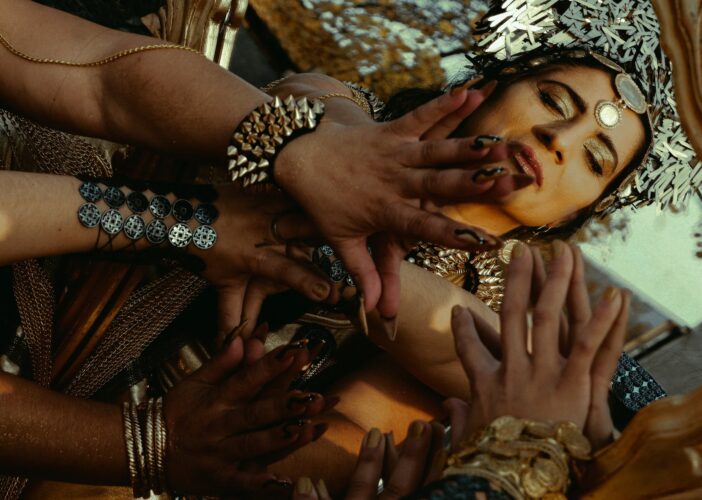

Comments are closed here.